This is a grade II listed building in a prominent position in the centre of High Street, but had deteriorated since it closed in 2006. The Georgian-style building dates from the late 18th century and was first recorded in a trade directory of 1784. The Great British Universal Directory of 1793 notes that the Birmingham-to-Manchester coach could be caught in Cheadle, at the Wheatsheaf Inn. Both the Wheatsheaf and the nearby former Royal Oak provided horse-drawn coaches until the early 1900s.
A print of The Wheatsheaf.
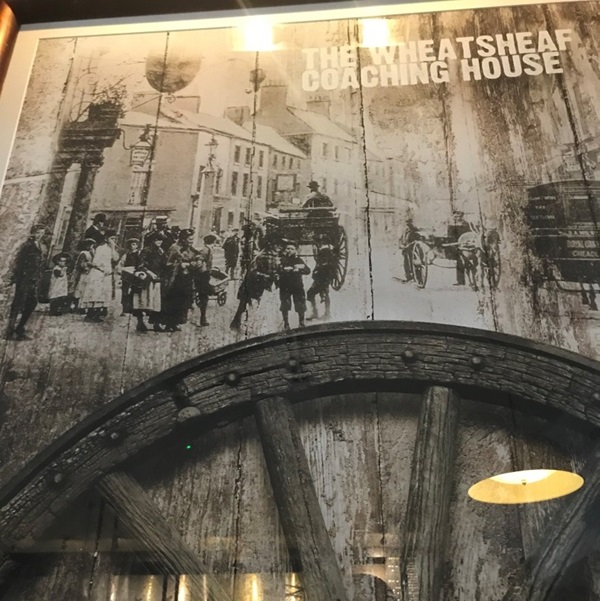
A print and text about designing The Wheatsheaf.
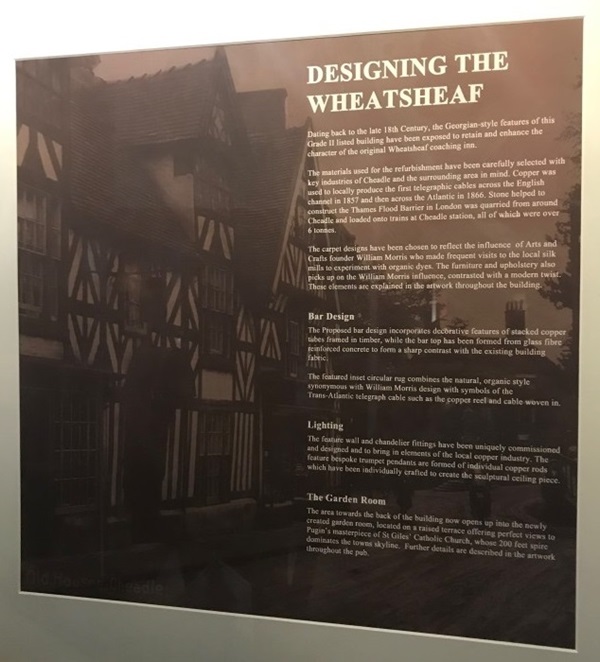
The text reads: Dating back to the late 18th century, the Georgian-style features of this grade II listed building have been exposed to retain and enhance the character of the original Wheatsheaf coaching inn.
The materials used for the refurbishment have been carefully selected with key industries of Cheadle and the surrounding area in mind. Copper was used to locally produce the first telegraphic cables across the English channel in 1857 and then across the Atlantic in 1866. Stone helped to construct the Thames Flood Barrier in London was quarried from around Cheadle and loaded onto trains at Cheadle station, all of which were over 6 tonnes.
The carpet designs have been chosen to reflect the influence of Arts and Crafts founder William Morris who made frequent visits to the local silk mills to experiment with organic dyes. The furniture and upholstery also picks up on the Williams Morris influence, contrasted with a modern twist. These elements are explained in the artwork throughout the building.
Bar Design
The proposed bar design incorporates decorative features of stacked copper tubes framed in timber, while the bar top has been formed from glass fibre reinforced concrete to form a sharp contrast with the existing building fabric.
The featured inset circular rug combined the natural, organic style synonymous with William Morris design with symbols of the Trans-Atlantic telegraph cable such as the copper reel and cable woven in.
Lighting
The feature wall and chandelier fittings have been uniquely commissioned and designed and to bring in elements of the local copper industry. The feature bespoke trumpet pendants are formed of individual copper rods which have been individually crafted to create the sculptural ceiling piece.
The Garden Room
The area towards the back of the building now opens up into the newly created garden room, located on a raised terrace offering perfect views to Pugin’s masterpiece of St Giles’ Catholic Church, whose 200 feet spire dominated the town’s skyline. Further details are described in the artwork throughout the pub.
A print and text about St Giles’ Church.
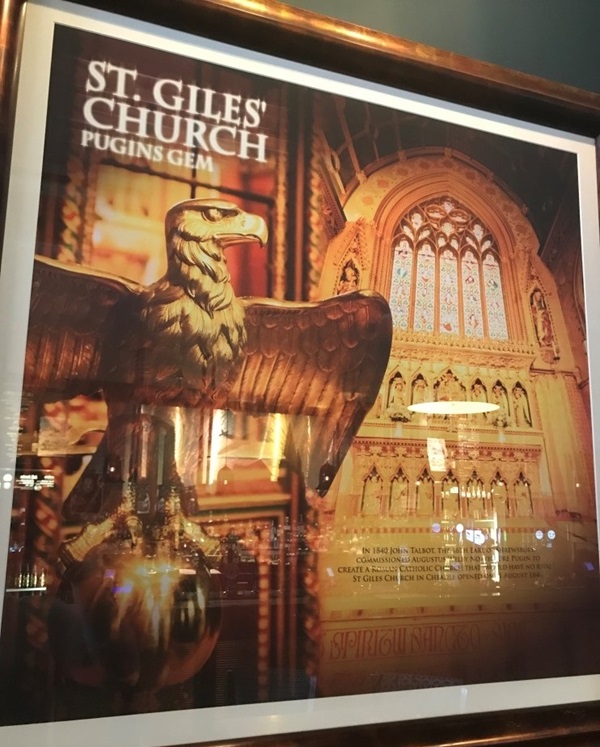
The text reads: In 1840 John Talbot, the 16th Earl of Shrewsbury, commissioned Augustus Welby Northmore Pugin to create a Roman Catholic Church that ‘would have no rivals’. St Giles Church in Cheadle opened on 31 August 1846.
A print and text about Joseph Cyril Bamford.
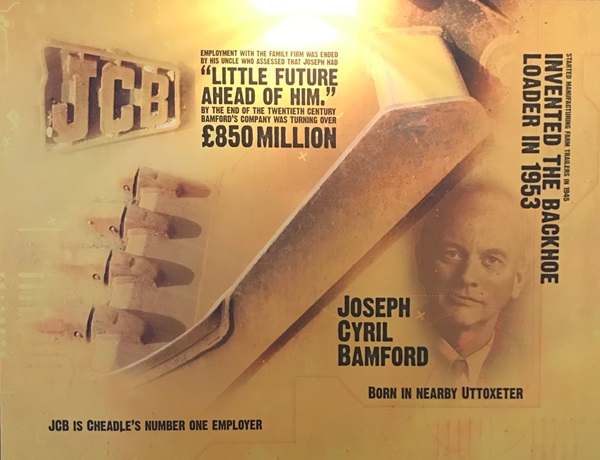
The text reads: JCB is Cheadle’s Number One Employer.
He was born in nearby Uttoxeter.
He invented the backhoe loader in 1953.
By the end of the twentieth century, Bamford’s company was turning over £850 million.
Text about Alton Towers.
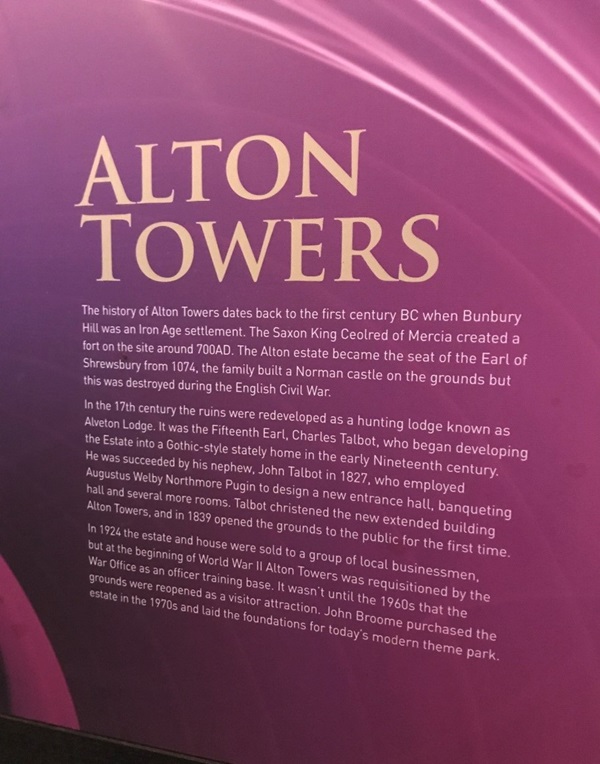
The text reads: The history of Alton Towers dates back to the first century BC when Bunbury Hill was an Iron Age settlement. The Saxon King Ceolred of Mercia created a fort on the site around 700AD. The Alton estate became the seat of the Early of Shrewsbury from 1074, the family built a Norman castle on the grounds but this was destroyed during the English Civil War.
In the 17th century the ruins were redeveloped as a hunting lodge known as Alveton Lodge. It was the Fifteenth Early, Charles Talbot, who began developing the Estate into a Gothic-style stately home in the early Nineteenth century. He was succeeded by his nephew, John Talbot in 1827, who employed Augustus Welby Northmore Pugin to design a new entrance hall, banqueting hall and several more rooms. Talbot christened the new extended building Alton Towers, and in 1839 opened the grounds to the public for the first time.
In 1924 the estate and house were sold to a group of local businessmen, but at the beginning of World War II Alton Towers was requisitioned by the War Office as an officer training base. It wasn’t until the 1960s that the grounds were reopened as a visitor attraction. John Broome purchased the estate in the 1970s and laid the foundations for today’s modern theme park.
External photograph of the building – main entrance.
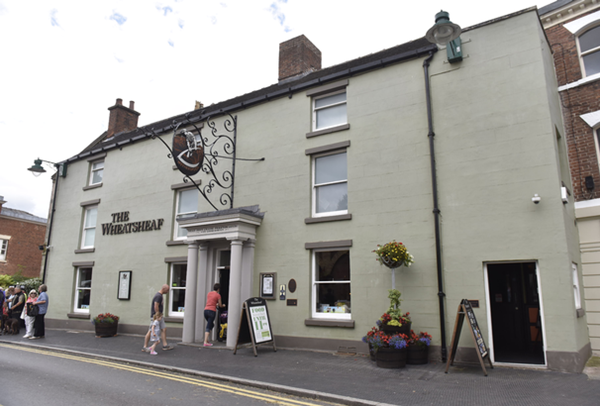
If you have information on the history of this pub, then we’d like you to share it with us. Please e-mail all information to: pubhistories@jdwetherspoon.co.uk